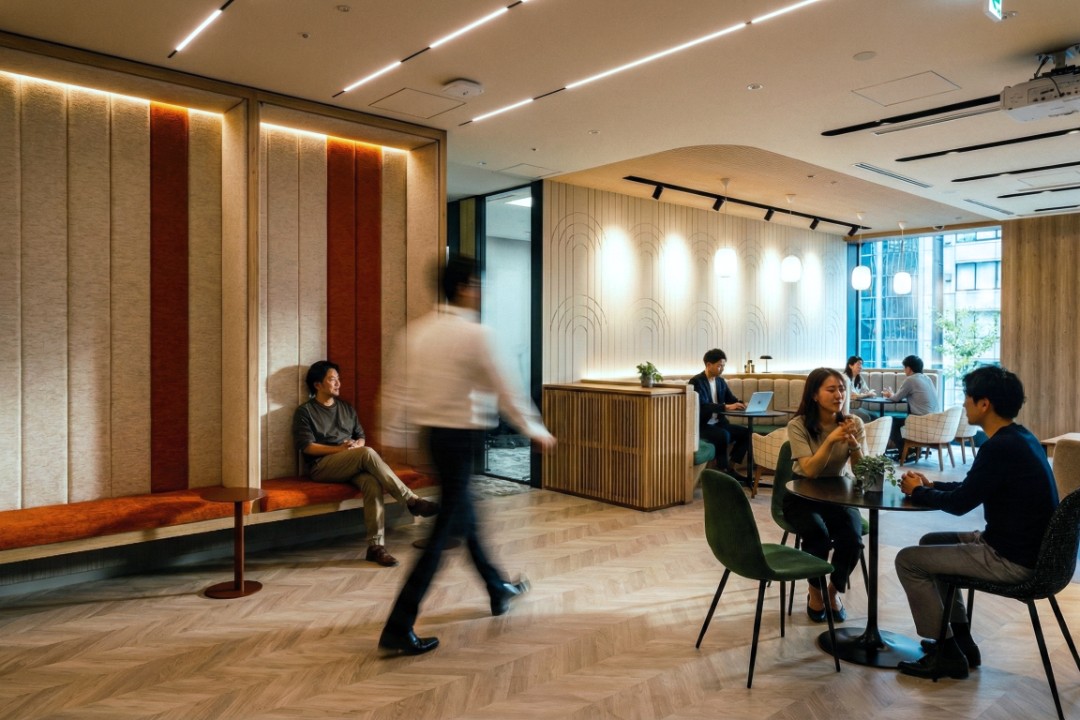What is the Difference between a Serviced Office and a Leased Office?

Planning on starting a company or expanding your business? In that case, one of the first things you should sort out is your office in terms of its size, location, and the facilities it offers. You’ll typically choose between two options: serviced or leased offices. While both provide physical space to work from, there are major differences in terms of the flexibility, amenities, and readiness they offer, which will impact your short-term costs and long-term growth potential.
Why Choosing Between a Serviced and Leased Office Matters
Picking the right office setup isn’t just about zeroing in on an available space. Your choice directly affects your cash flow, branding potential, and how quickly you can scale or downsize. Serviced offices are designed to be agile, which has become a top priority for businesses worldwide since the pandemic. In fact, according to Business Research Company’s Serviced Office Global Market Report 2025, the serviced office market size is expected to grow to US$80.38 billion in 2029 at a compound annual growth rate of 15.6%. This is thanks to the burgeoning tech sector, increasing demand for workspace, and rising investments.
What is a Serviced Office?
A serviced office is a fully furnished, plug-and-play workspace that offers clients adaptable lease terms. These offices usually come with high-speed internet, desks and chairs, cleaning services, front-desk reception, and shared meeting rooms. So all you need to do is move in, connect to the Wi-Fi, and get straight to work. They’re convenient because of their all-inclusive monthly pricing that covers essentials like utilities, maintenance, and shared services, as well as perks like gym access or wellness spaces. These premises work on a “pay as you grow” model, so you’re not stuck paying for unused desks or excess space and can scale up or down depending on your business needs.
What is a Leased Office?
A leased office refers to a commercial rental agreement that generally lasts anywhere from 3-10 years. These spaces are usually delivered in CAT A condition, so you get a functional but unfinished space. Think completed flooring, lighting, and HVAC, but no furniture, internet, or operational setup. So you have the freedom to decide the layout, interior design, and which vendors to work with for IT, internet, cleaning, and furnishings. But leased offices often require hefty upfront costs like deposits, legal fees, architect or designer fees, and complete fit-outs. Setting them up is time-consuming and takes a lot of planning, patience, and funds.
Key Differences between Serviced and Leased Offices
At a glance, both types offer workspace, but if you look closer, the distinctions are clear. Each option comes with its own timeline, cost structure, service levels, and ideal use cases.
Move-in time
Serviced offices are available immediately and you can usually move in within 24-48 hours of signing the contract. But getting a leased office often requires 3-6 months to iron out contract details and complete installations.
Lease terms
Serviced office contracts are short and adjustable. Many operate on rolling monthly terms or 6-12 month agreements. On the other hand, leased offices lock you in for 3-10 years, with very little wiggle room to get out of a contract before it officially ends.
Customisation
With leased offices, you can fully brand your space — down to wall colours and workstation layout. This is important if you want an environment tailored based on your work culture and client-facing image, if you value consistency across multiple locations, or have specialised infrastructure needs. However, with serviced offices, there’s only so much you can do if you want to personalise your workspace. Often, you only have a say over the desk arrangements and signage.
Included services
With serviced offices, your rent includes internet, cleaning, maintenance, and access to shared areas. Some spaces offer everything from IT support to mail handling, while others are more bare-bones. When it comes to leased spaces, it’s your responsibility to source and manage all these services.
Cost structure
Serviced offices tend to be more pricey per square foot because of the bundled services they provide. However, they require lower upfront investment. Leased offices demand higher initial capital, but once operational, the monthly rent is usually lower than serviced spaces when calculated per square foot.
Control over vendors
Leased spaces let you choose your own service providers, so you get complete control over quality, pricing, and compatibility with your systems. In contrast, you have no choice but to go with a serviced office’s pre-selected vendors as part of your package.
Who they work best for
Serviced offices provide low-commitment, high-access spaces that work best for fast- growing teams, start-ups, or temporary project hubs. Leased spaces suit established firms with a clear headcount, strong branding needs, and long-term plans in a specific location.
What to Consider When Choosing a Serviced or Leased Office
If you’re on a tight budget, the type of office you choose plays a big part in your financial flexibility. Serviced offices are easy to manage from a cashflow perspective as they don’t require massive upfront payments and have predictable monthly charges. They’re also your best bet if you’re a small business or start-up that wants to enter a new market quickly and therefore values simplicity, speed, and agility. You can also scale up or down without worrying about empty desks or re-negotiating contracts.
Leased offices are a better fit for companies with deeper pockets that can afford the higher setup costs related to furnishings, design and installation, and legal fees. These premises are a smart choice if you’re confident in your long-term headcount, which means you can shell out for a permanent space and fixed overheads. While the initial outlay will be high, you’ll get a better ROI over time.
Serviced offices offer speed, flexibility, and simplicity, making them the top pick for companies that need to move fast and adapt quickly. Leased offices, on the other hand, provide control, customisation, and long-term cost benefits, but they require more time and capital upfront. If you’re not sure about what to pick, scout both options and ask for detailed cost breakdowns. Your office decision should reflect your business strategy, growth plans, and team needs.
Ready to Find the Perfect Office Space for Your Business?
Whether you’re looking for a flexible space to move in quickly or a stable environment for long-term growth, choosing the right office setup can pave the way for your business success. If you’re interested in exploring a workspace that offers both convenience and collaboration, reach out to us now. Our expert consultants will provide tailored advice to help you discover the office solution that best fits your needs, driving your business forward. Start your new office chapter today!


